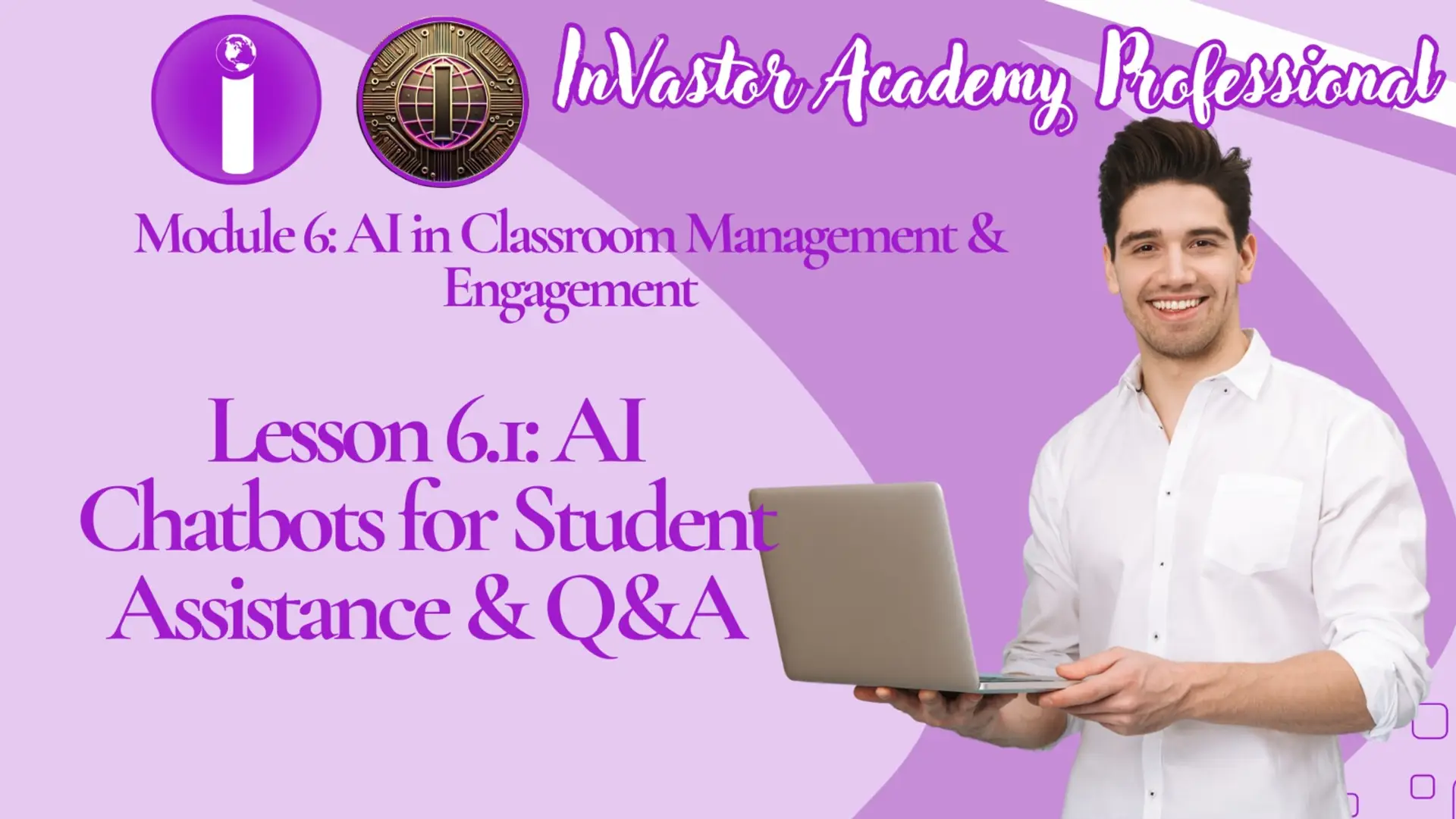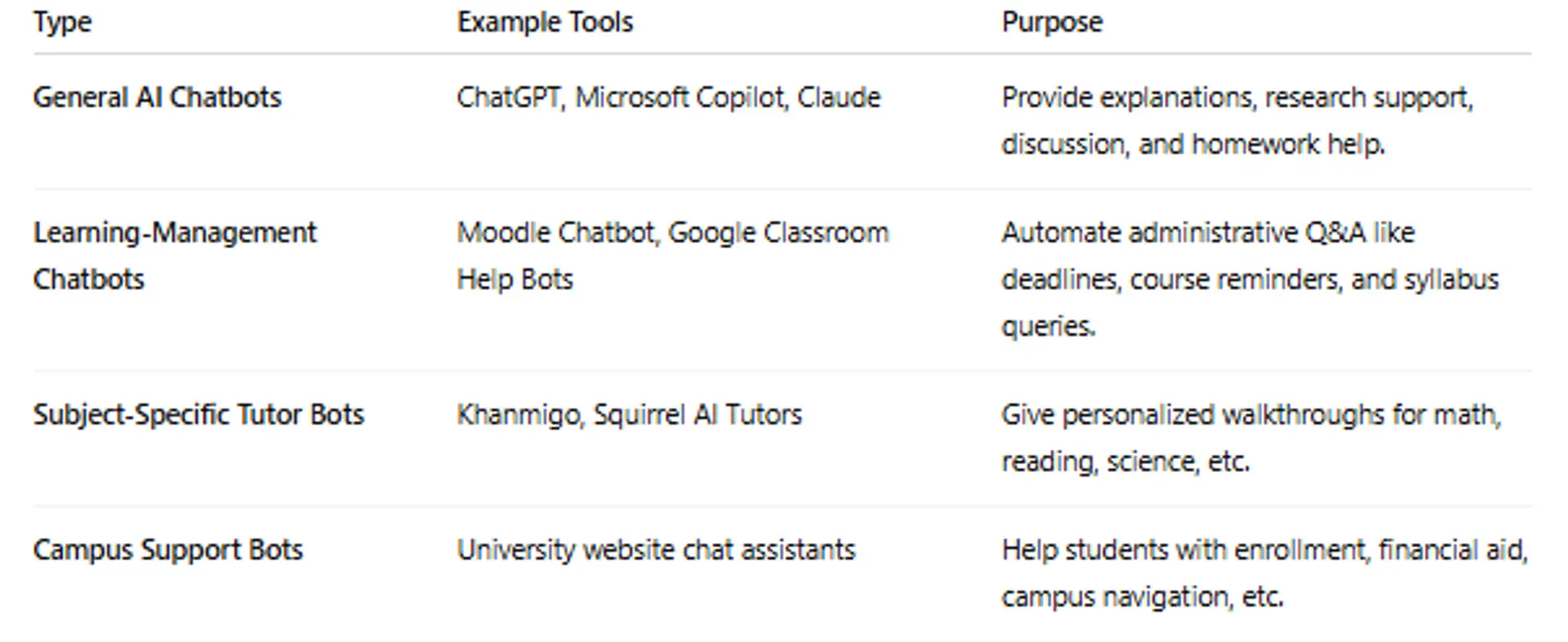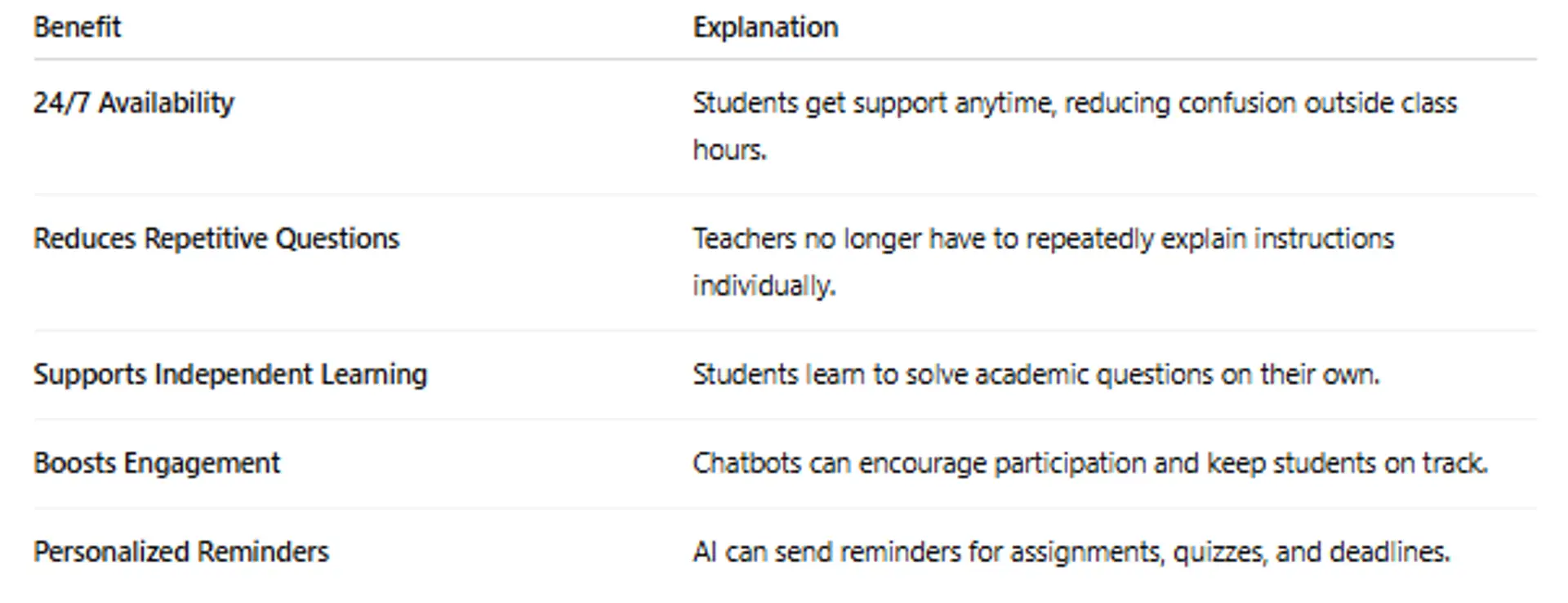

Module 6: AI in Classroom Management & Engagement Lesson 6.1: AI Chatbots for Student Assistance & Q&A
Module 6: AI in Classroom Management & Engagement
Lesson 6.1: AI Chatbots for Student Assistance & Q&A
Learning Objectives
By the end of this lesson, educators will be able to:
- Understand the role of AI chatbots as student support tools.
- Identify different types of chatbot systems used in education.
- Integrate chatbots to provide on-demand Q&A, tutoring, and clarification.
- Establish boundaries for chatbot usage to ensure academic integrity and meaningful learning.
1.What Are AI Chatbots in Education?
AI chatbots are conversational tools that simulate human-like dialogue to provide:
- Instant answers to student questions.
- Step-by-step explanations for concepts.
- Guided problem-solving help.
- Communication support for students who are shy, anxious, or learning a new language.
They operate 24/7, making support always accessible, even outside class hours.
2.Types of AI Chatbots Used in Classrooms

3.Benefits of Using Chatbots in Education
✅ Instant Support: Students get help as soon as questions arise.
✅ Personalized Responses: Chatbots can adjust to student level and pace.
✅ Enhances Participation: Benefits shy or hesitant learners.
✅ Saves Teacher Time: Reduces repetitive questions and admin workload.
✅ Encourages Self-Directed Learning: Students learn to inquire and reflect.
4.How Teachers Can Integrate AI Chatbots
1. Identify Student Needs
Select what tasks the chatbot will handle:
- FAQs
- Instructions
- Tutoring assistance
- Homework support
2. Choose a Platform
Recommended tools:
- ChatGPT Classroom Mode
- Google Bard / Gemini
- Khan Academy Khanmigo
- Microsoft Copilot for Education
- Custom chatbots (Dialogflow, ManyChat, Botpress)
3. Set Boundaries and Rules
Students should know:
- The chatbot is a support tool, not the final source of truth.
- Always verify academic content through teacher or official materials.
4. Monitor Performance & Adjust
Review:
- Chatbot interactions
- Student improvement and behavior
- Accuracy of responses
Update regularly to ensure alignment with course objectives.
5. Practical Classroom Uses

6. Responsible Use Guidelines
To ensure the chatbot supports learning rather than replaces it, teachers should:
- Require students to explain their answers, not just submit chatbot responses.
- Encourage students to ask why, not just “give me the answer.”
- Remind students to verify chatbot outputs for accuracy.
- Create classroom norms such as:
- Cite chatbot assistance when used.
- Do not copy responses directly.
- Use AI for process, not final answers.
7.Supplementary Resources
- What is a Chatbot?
- AI-powered mental health chatbots developed as a therapy support tool | 60 Minutes
- How Do AI Chatbots Work - Learn the basics of AI Chatbots in under 5 minutes
Lesson 6.1 Quiz — AI Chatbots for Student Assistance & Q&A (10 Multiple Choice)
You must score at least 70% to pass.
This quiz counts toward your certification progress.
Click here for Quiz 6.1:
Conclusion
AI chatbots are powerful classroom allies that extend teaching beyond classroom hours, offer individualized support, and promote self-paced learning. However, to maximize their benefits, educators must set clear expectations and model responsible usage. When used thoughtfully, chatbots help create a more supportive, engaging, and student-centered learning environment.
Next and Previous Lesson
Next: 6.2: Automating Admin Tasks (attendance, emails, scheduling, grading reports)
Previous: Lesson 5.4: Building a Culture of Digital Academic Integrity
AI for Educators: Personalized Learning & Content Creation
Related Posts
© 2025 Invastor. All Rights Reserved

User Comments